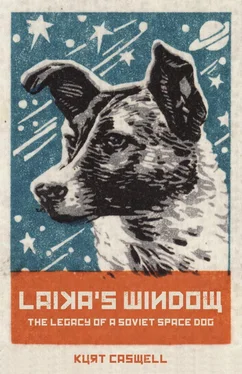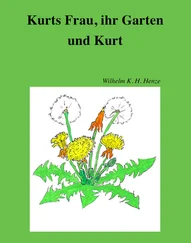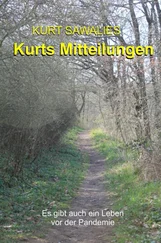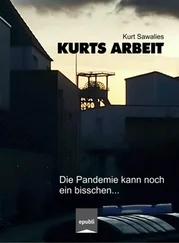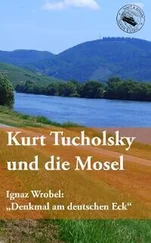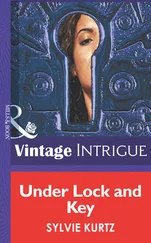Apollo 17 launched at night from Cape Canaveral on December 7, 1972, the first night launch in the US carrying astronauts. Half a million people turned out to watch as the massive Saturn V rose into the dark sky, lighting up the Indian and Banana Rivers. Designed and developed by Werner von Braun, Arthur Rudolph, and their team in Huntsville, the Saturn V is the largest, most powerful rocket ever to fly; it had to be to lift and deliver the hardware required for the moon missions. It stood taller than the Statue of Liberty, weighed 6.5 million pounds when fueled, and lifted 310,000 pounds of payload into Earth orbit. The payload alone is the equivalent of about thirty-one elephants, and pretty big ones too. Most everyone watching on-site and on television knew that Cernan, Schmitt, and Evans were on board, but few likely knew about Fe, Fi, Fo, Fum, and Phooey, those little four-legged beasts riding that great energy into the heavens.
Cernan and Schmitt spent three days on the moon in a region known as the Taurus-Littrow valley. They lived and worked out of the lander, Challenger , as if on a long weekend camping trip in a remote location with no atmosphere. Their primary mission was to sample lunar highland material (the lighter spots on the surface of the moon when you look at it from Earth) and investigate possible new volcanic activity (less than three billion years old). Each day they ventured out for about seven hours, driving their Lunar Roving Vehicle (which is still up there) to various locations to take measurements, collect rocks, and deploy explosive packages that, when detonated, would generate data useful in mapping the top few kilometers of the moon’s crust. On the first day Cernan caught the hammer attached to his space suit on the right rear fender of the rover and broke it. He and Schmitt fashioned a new fender out of a lunar map, duct tape, and clamps from a telescope. The mission broke a number of records that still stand, including longest duration moon landing, longest duration in lunar orbit, and largest lunar sample returned to Earth.
What were the mice doing during all this time in the command module with Evans? Eating seeds and absorbing cosmic radiation. Crew members of the previous Apollo missions had reported seeing flashes of light when they closed their eyes, usually when they put the lights out in the spacecraft for a sleep period. These flashes, or streaks of light, occurred about once every thirty seconds. The flashes were not observed on the surface of the moon but during the journey to the moon, in orbit around it, and in orbit around the Earth. While the mice collected data with the radiation detectors (dosimeters) implanted into their heads, Evans wore a specialized helmet to track cosmic rays (the Apollo Light Flash Moving Emulsion Detector). The result was that, yes, the flashes were indeed caused by cosmic rays. The next question was, were these cosmic rays harmful, especially to the retina of the eyes and to the brain? When the mice returned to Earth, researchers might find out.
After splashdown on December 19, the mice were transported aboard the USS Ticonderoga to a medical facility in Pago Pago, the territorial capital of American Samoa. In a letter to Colin Burgess, co-author of Animals in Space , Delbert Philpott, the principal investigator for the pocket mice experiment, tells the story of transporting the mice to his lab. Philpott knew that in the moist tropical air of the Pacific islands the canister might heat up and kill Fe, Fi, Fo, Fum, and Phooey. He would have to hurry to get them from the ship at dockside to the lab facility at Lyndon B. Johnson Hospital. Speed limits on the island were painfully slow and rigorously enforced, and in a moment of roguish genius, Philpott realized that the only vehicle on the island that could push beyond these limits was an ambulance. So off he went in an ambulance to pick up the canister. He found a note from one of the astronauts attached: “For what it’s worth, I think I hear scratching on the inside.” So they were still alive, but they wouldn’t be for long if he tarried. The ambulance took off, breaking the speed limit to get the mice to the lab where they could crack open the canister and let them out, give them water and food and air-conditioning, whatever they needed.
Later Philpott got a phone call from the press. What’s wrong with the mice? they wanted to know. They had heard the mice were transported by ambulance to a hospital. Well, nothing in fact , Philpott responded, nothing out of the ordinary. The mice were always going to end up at the hospital, because that’s where the lab is .
But the press was not too far off in their concern, because when Philpott opened the canister, he found two of the mice in good condition, two others in a weakened state, and Phooey, little Phooey, was dead. But then, Phooey, Fe, Fi, Fo, and Fum were always going to end up dead, because following examination the four remaining mice were euthanized for further study. Their bodies were preserved and flown to the Ames Center in California, where researchers concluded that high-energy radiation did damage the retinas of the mice but only minimally. The spacecraft had protected them fairly well. These findings gave Apollo astronauts a little peace of mind. In 2016, however, Florida State University physiologist Michael Delp and his team published a paper supporting findings that astronauts who flew in the Apollo missions outside the protection of Earth’s magnetic field had an increased rate of cardiovascular disease mortality of four to five times that of astronauts who did not fly at all, or who flew only into low-Earth orbit. Mice were again used in some of this research. Cosmic rays, then, are a danger to astronauts (and to mice) and will remain a major challenge for future deep-space travelers.
¤
Skylab (1973–79), America’s first space station, rose into orbit on a Saturn V rocket repurposed from the Apollo moon missions, the final mission of the Apollo hardware. It had been just twenty-five years since Laika became the Earth’s first space traveler, and now humans and animals were living and working in space for weeks at a time. At the end of its life, Skylab fell out of orbit and burned up in the atmosphere. It was an international event. Some people feared it would rain debris down on top of them; others wanted it to, or at least wanted to find debris scattered in their backyards. Some people wore Skylab T-shirts with a bull’s-eye as an attractant; others wore hard hats as a repellant. Skylab broke up somewhere over western Australia, and a seventeen-year-old named Stan found twenty-four pieces near his hometown of Esperance. Then the town fined NASA four hundred dollars for littering. But before all that Skylab was an orbital laboratory, the next step in America’s space program after the beauty and power of Apollo. What made Skylab really sing was the NASA Skylab Student Experiment Competition wherein a panel of National Science Teacher Association judges selected science projects to carry into space, proposed by students from all over the US.
One of the best experiments was “Web Formation in Zero Gravity,” proposed by seventeen-year-old Judith Miles of Lexington, Massachusetts. It was the first arachnid study in space and featured two female crowned orb-weaver spiders that became known as Arabella and Anita. The experiment tested motor response in the spiders to better understand how their central nervous systems operated in microgravity. The orb-weaver spider wants to spin webs, as without a web there is no food, and without food there is only death. So the orb-weaver spins webs, beautiful, geometrically balanced webs. If Arabella and Anita could spin such webs in space, it would indicate that their central nervous systems were operating normally. And if their nervous systems were operating normally, perhaps American astronauts’ nervous systems were too. The experiment would also say something about the role of gravity in a spider’s ability to spin webs and help determine whether spiders, and other Earth creatures, could adapt to life in space. In his analysis of the experiment, “Spider Web-building in Outer Space,” published in the Journal of Arachnology , Peter Witt and his co-authors write that the fact that “spiders always run on the underside of a web or a bridge thread, hanging down as they move, makes one aware of the important role which the use of the animal’s own weight plays in locomotion and silk production.” What would happen to a spider’s locomotion and silk production in an environment with limited gravity?
Читать дальше
